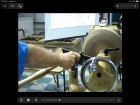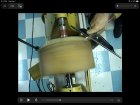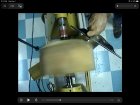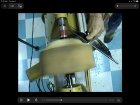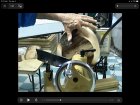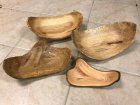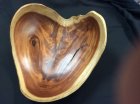To speed up production work, you can use tools, or adapt of you don't have all the 'extra' tools. With proper lay out, you start with a 'balanced' blank. For me, I cut slabs, most of the time on my Chainsaw Chopsaw. There is a video on that one, and I plan to 'new and improve' that one... It does a pretty good job of cutting slabs that have parallel sides. You can do a fair job with plumb lines on the log blank and 'eye balling' the cuts. The other way is to cut with a wood mizer type of bandsaw mill, or I have a Laguna 16HD bandsaw that cuts to 16 inches high, which is bigger than I ever turn any more. This saw allows me to cut blanks that have almost perfectly parallel sides. I round them off on my smaller bandsaw so the circles are very close to round. I prefer to start the rounding with a square blank as the corners give me some thing to push on and keep my fingers farther away from the blade. I drill a recess so I can expand my chuck into the recess and have no need to use a worm screw or a face plate. With some experience and careful lay out, you can have your blanks end up with the grain centered, but that is not some thing I obsess about. I never start with a half log section like Lyle does in his video, though there are many who do. When cutting the log up, I always cut off that rounded side before ripping the log down the center. If nothing else, I have flats on both sides, and kindling pieces for the wood stove. The corner pieces from the rounding also are great for starting fires. Parallel sides and a round blank means you can start turning at a higher speed.
Natural edge bowls are another story, but I still prefer a flat side for the bottom as that makes every other part of the process easier to do.
For hogging off all of the wood that is not part of the finished bowl, you can't beat a good scraper. Yea, they don't leave a pretty surface, but that is what gouges are for. I wouldn't use them for the roughing out of a natural edge bowl though. They would probably take off most of the bark... What ever works for you, as long as you don't have things flying off the lathe and around the shop, is fine. We are all different, and some of us are more different than others....
robo hippy

